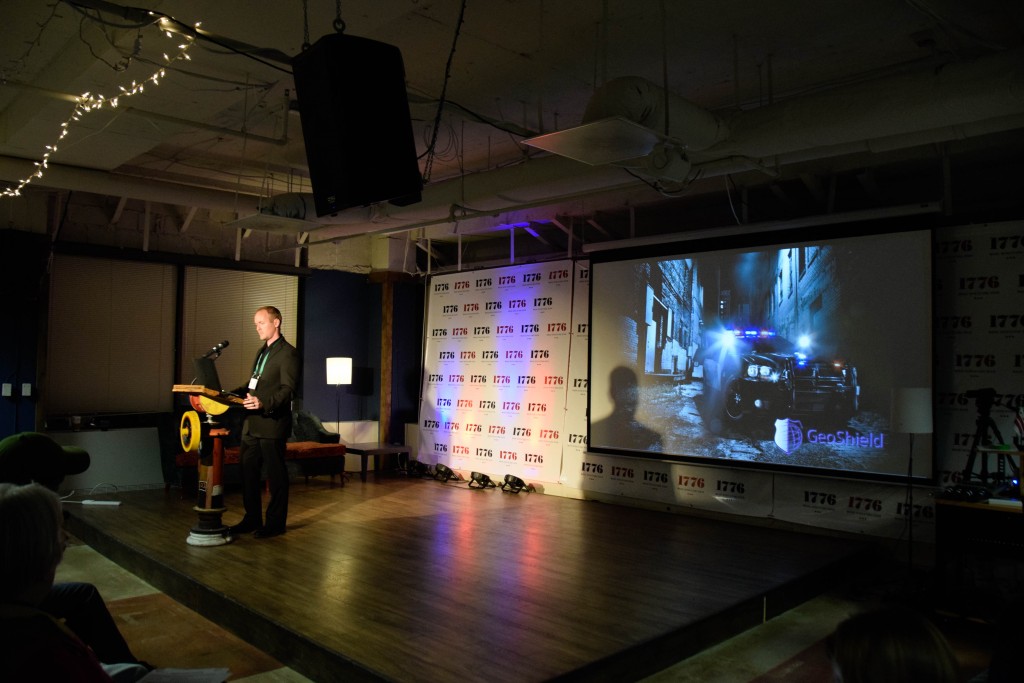Yesterday, GovLoop and Esri hosted an event, “Enhance Emergency Decisions,” designed to showcase the power of Geographic Information Systems (GIS) during crises. GIS connects big data, cloud and analytics, converging these technologies to display information in a rich and interactive way. With GIS, governments can improve the way they secure citizens, protect natural resources, and reduce crime in neighborhoods.
The presentations started with Brady Hoak, GIS Engineer and iOS Developer at Esri, who discussed the benefits of ArcGIS GeoEvent Processor for Server and how it can expand the capabilities of ArcGIS.
GeoEvent Processor provides the ability to stream live data from sensors and view this information on a dynamic map. One example that Hoak used was showing how GeoEvent Processor can track offenders on parole wearing ankle bracelets. “There’s so much data coming in from ankle bracelets, that it becomes useless. Officers are spending too much time analyzing and not enough time in the field,” said Hoak. With GeoEvent Process, officers can identify the location of individuals, identify patters and spot abnormal behavior that might be breaking parole.
“These tools are easy to use and allow corrections officers to quickly do their job and be out in the field to help individuals,” said Hoak. “We can provide customizable alerts when parole violations occur.”
One of the main benefits of GeoEvent Processor is that it can help to create a common operating picture about what is happening in the field and display real-time data about the status of assets like vehicles, personnel or sensors. For law enforcement professionals, this provides tremendous benefits to give officers improved situational awareness.
For instance, a police department may require a real-time map of all police patrol groups so they can properly assess their workforce and know how to quickly deploy units if necessary. With GeoEvent Processor, the department can make more informed decisions faster, based on authoritative data.
“This is just one application of this technology, but you can really apply it to any domain you are monitoring information and try to filter out the noise and try to find real actionable intelligence from that noise, so you can use technology to do the brunt of the lifting for you and reduce human workload,” said Hoak.
The second presenter was Nicholas Poorte, Industry Manager at CyberTech Systems & Software Inc. Previously, Poorte was a Sworn Law Enforcement Officer from the state of Utah and most previously worked full time with the Ogden City Police Department. At the Ogden City Police Department, he worked as a patrol officer, a detective specializing in domestic violence and persons crimes, negotiator for the Metro SWAT Team and lead in the Ogden Real Time Crime Center.
Poorte’s presentation demonstrated the various modules of CyberTech’s GeoShield solution and how governments can gain value and efficiencies leveraging real time analysis and dissemination of information to essential agency team members during a crisis. Through GeoShield, agencies can share technical insight, and understand operations and police procedure to increase benefit to law enforcement.
“GeoShield for Law Enforcement is an application tool that enhances access to information and gives the ability to access information in real-time, whether those are GPS logs, or just records. Once the officer hits enter and finishes up a report, it’s into the system and now there is access to it, giving officers a nice clean interface that is very intuitive,” said Poorte. This helps officer be more efficient, and better serve their community.
“We also have a way to provide analytics tools, and can also create workflows and processes to help the officers. GeoShield is designed with Esri and takes advantages of the Esri Platform and all the critical tools within an agency which include.”
Poorte also described the value of GeoShield for Intelligence. This service leverages GIS to help support programs related to counter terrorism and protecting critical infrastructure. It also manages tips and leads from the community.
“We get a lot of information from the public. Police departments don’t solve crimes — the public solves crimes. We get tips and leads from a lot of the citizens of a city that we work in, and without that, you can be dead in the water,” said Poorte.
You can watch a video of the entire event below.
